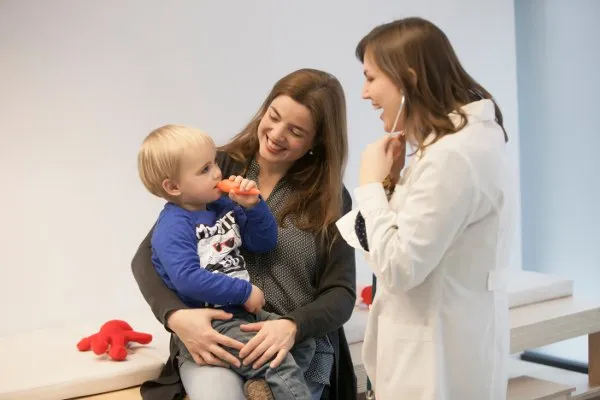Diabetes is a disease that, at present, has no cure.However, studies do not cease and new treatments that improve the quality of life of patients do.
Dialibre is the first clinic that opens its doors in Spain, -in concrete in Madrid -, specialized in pediatric diabetes and nutrition and integrates both medical and psychological attention as well as the latest advances in technology for the treatment ofdisease.
THE PLUS OF DIALIBRE
This center, which opened on March 1, is an initiative promoted and coordinated by pediatrician Patricia Enes, who says that "things work when all Puzzle pieces fit."
It is true that diabetes affects many adults but do not forget that it is also a disease that is present in children.Epidemiological studies calculate around 1,200 new cases of diabetes in children under 15 per 100,000 inhabitants a year.
This means, according to the pediatrician, “that in Spain we have around 15,000 children below 15 years with diabetes and about 30,000 cases between 15 and 25 years”, a strip of age that this center serves.
Enes clarifies that type 1 diabetes is the one that predominates in children, "it is estimated that it occupies between 80-90% of cases."
Type 2 diabetes in children is unusual because "obesity and overweight is frequent but in our country they are stabilized," he adds, although this type of diabetes reaches 90 percent in adults.
The entrance to the clinic specialized in pediatric diabetes.
The entrance to the Dialibre Clinic.Facilitated by them
Maria Seoane, executive director of the clinic, details that the children who go to this center will not have the impression of being sick.On the contrary, "they will think that it is their day off and as soon as they enter will have a huge sense of peace."
Dialibre, in addition to medical consultations, has a small nursery, a kitchen in which to teach the little ones how they should eat, and even a room to make photography and short film workshops.
The final objective is that their patients develop autonomy thanks to the integral approach they receive there through medical and psychological care, technology and telemedicine, and diabetological education.
The technology immersed in diabetes
Instead that the patient has to adapt to the treatment of diabetes, the new technologies applied to this disease, what they try is that it adapts to the affected people.
Patricia Enes, pediatrician and medical director of the Free Day Clinic.
Patricia Enes, pediatrician and medical director of the Free Day Clinic.Facilitated by the clinic.
The pediatrician indicates that with this type of technologies they refer mainly to two services that the clinic has:
Continuous glucose monitoring: This system allows information on glucose levels to be obtained every 5 minutes through the interstitial fluid and is also able to show the trend.Does it mean that the glucose is raising me or that it is going down?
Insulin pumps: They can be programmed.In the case of children they are very useful because while with the insulin pen you can administer minimum doses of 0.5 units, with the pump, that dose is lower, it is 0.025 units with which small glycemic variability can be corrected.Keep in mind that the basal requirements of patients are very different throughout life and also at every moment of the day.
The slow incorporation of insulin bombs
The incorporation of this technology in the pediatric age in Spain is slower than in other countries.
A child playing at the clinic.
A child playing at the clinic.Facilitated by the ClinicDialibre
Patricia Enes points out that here is used by about 5% of pediatric age with type 1 diabetes while in other countries such as Slovenia its use is 75% and in Denmark of 59%.
This important difference is mainly due, according to the doctor, to two reasons:
Impact of economic resources.
The majority of diabetes and hospitals societies say that there is a lack of personnel in the pediatrics units trained for their use and in which there are trained personnel do not have enough time to devote themselves to it.
Research situation
Dr. Enes details that the main research routes focus on:
One of the parts of the dialibre center.
One of the parts of the dialibre center.Facilitated by the clinic.
Try to reverse the disease when it occurs: they try that through pancreatic cell transplants the disease is reversed.Now it is achieved but only for a period of time because the immune system itself - which once attacked pancreatic cells and caused the selective destruction of these pancreatic islets that produce insulin - can do it again even if the new cells are transplanted.
Smart insulin development: methods that are able to act alone.There are already intelligent insulin patches that try to imitate the function that the pancreas has and therefore have enzymes that are able to detect glucose at each moment and depending on that they secrete the amount of insulin that the patient needs.
These two ways, he explains, "are in great development but are not yet a reality of treatment for the general of the population with diabetes."
The ultimate goal is that blood glucose levels are controlled and that supposes the minimum effort on the part of the patient.


